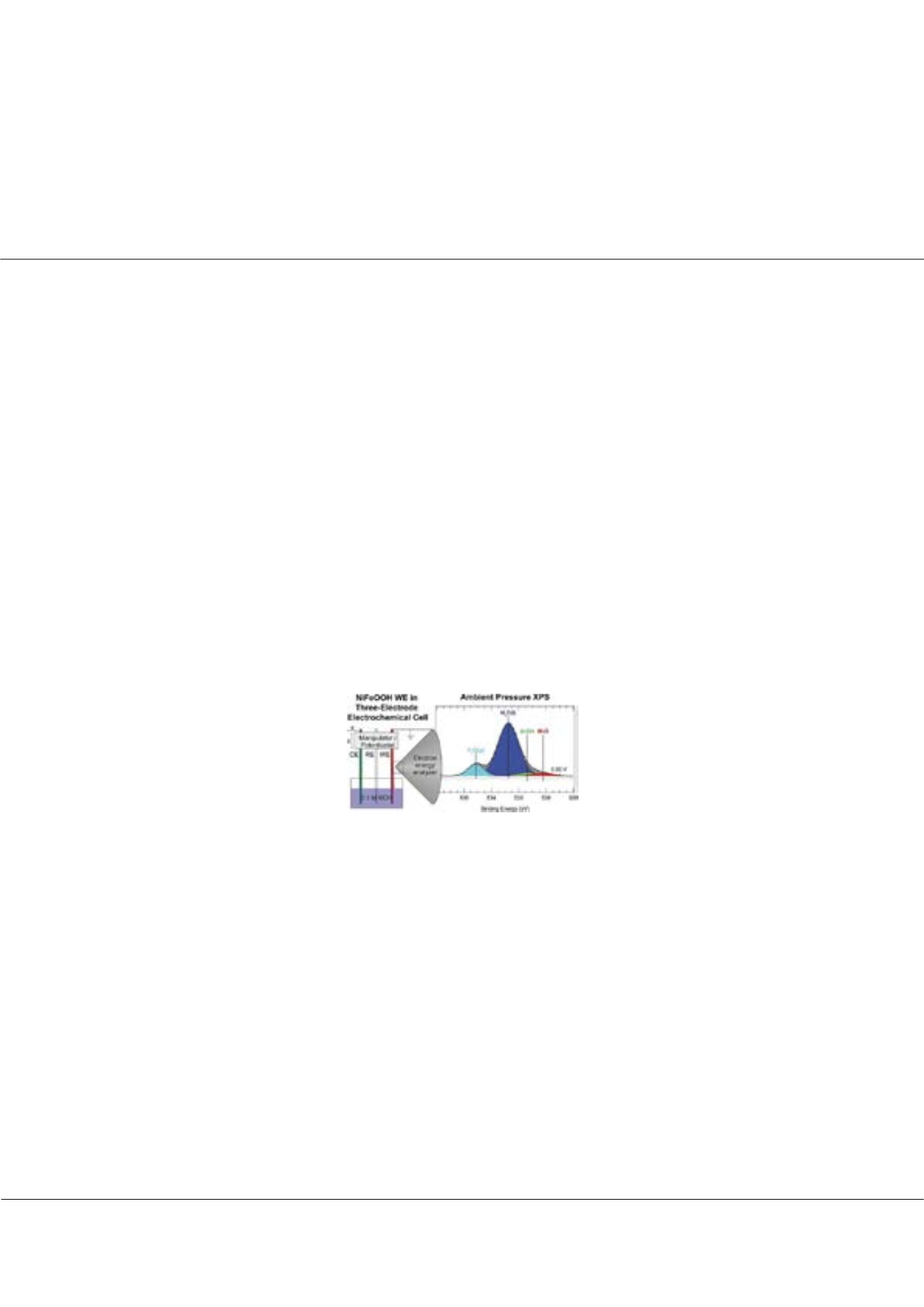

Page 75
conferenceseries
.com
Volume 9
Journal of Bioremediation & Biodegradation
ISSN: 2155-6199
Biofuel Congress 2018 &
Biomass 2018
September 04-06, 2018
JOINT EVENT
September 04-06, 2018 | Zurich, Switzerland
13
th
Global Summit and Expo on
Biomass and Bioenergy
&
12
th
World Congress on
Biofuels and Bioenergy
Operando Investigations of Electrochemical Interfaces for Solar Fuel Production by Ambient-
Pressure Photoelectron Spectroscopy
Harri Ali-Löytty
Tampere University of Technology, Finland
S
olar fuels could resolve the increasing demand for energy in future if only materials solutions capable for high solar-to-fuel
(STF) efficiency at cheap price are found. Solar fuels can be produced in photoelectrochemical cells (PECs) that consist
of electrodes made of photoactive materials that are coated with electrocatalyst materials. Currently, the STF efficiency of
PECs is largely limited by the lack of efficient electrocatalyst materials. Limiting reaction steps include the Oxygen Evolution
Reaction (OER) and the CO
2
Reduction Reaction (CO
2
RR), which are crucial for solar hydrogen and hydrocarbon fuel
production using only sunlight, water and carbon dioxide as raw materials. Operando analysis of reaction intermediates
at the solid-liquid interface provides fundamental understanding of catalytic reaction mechanisms and structure-activity/
selectivity relationships, which can guide the design of superior electrocatalysts. At present, X-ray Photoelectron Spectroscopy
(XPS) probing of the solid-liquid interface is limited to electrochemical operation at rather low current densities. Recently,
“tender” X-ray Ambient Pressure XPS and a dip-and-pull electrochemical cell depicted in the Fig. 1 were utilized to study
Ni–Fe electrocatalyst at different potentials [1]. The approach allowed operando measurements just above the onset of OER. A
two-dimension model was used to describe the spatial distribution of electrochemical potential, current density and pH as a
function of the position above the electrolyte meniscus and to provide guidance towards enabling the acquisition of operando
XPS at high current density. The current density of 10 mA/cm
2
is the desired operation condition in photoelectrochemical
devices. New electrochemical cell designs and early results allowing higher current densities will be presented.
Recent Publications
1. Ali-Löytty, H. et al. Ambient-Pressure XPS Study of a Ni–Fe Electrocatalyst for the Oxygen Evolution Reaction. J. Phys.
Chem. C 120, 2247–2253 (2016).
2. Hannula, M., Ali-Löytty H. et al. Improved stability of ALD grown amorphous TiO2 photoelectrode coatings by thermally
induced oxygen defects. Chemistry of Materials, in Press.
3. Ali-Löytty, H. et al. The role of (FeCrSi)2(MoNb)-type Laves phase on the formation of Mn-rich protective oxide scale on
ferritic stainless steel. Corrosion Science, in Press.
4. Hannula, M. et al. Fabrication of topographically microstructured titanium silicide interface for advanced photonic
applications. Scripta Materialia 119, 76–81 (2016).
5. Ali-Löytty, H. et al. Grain orientation dependent Nb–Ti microalloying mediated surface segregation on ferritic stainless
steel. Corrosion Science 112, 204–213 (2016).
Biography
Dr. Ali-Löytty has completed his PhD in physics in 2013 from Tampere University of Technology, Finland. After graduation, he visited SLAC National Accelerator
Laboratory at Stanford University, California as postdoctoral scholar. Dr. Ali-Löytty is specialized in surface science research utilizing synchrotron light mediated
methods, and he is a board member of the Finnish Synchrotron Radiation Users' Organization. Currently, Dr. Ali-Löytty holds a research post as Postdoctoral
Researcher at the Academy of Finland focusing on research on photonic materials for solar fuel production.
harri.ali-loytty@tut.fiHarri Ali-Löytty, J Bioremediat Biodegrad 2018, Volume 9
DOI: 10.4172/2155-6199-C1-014
















